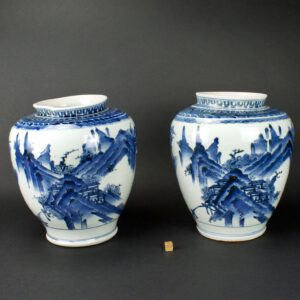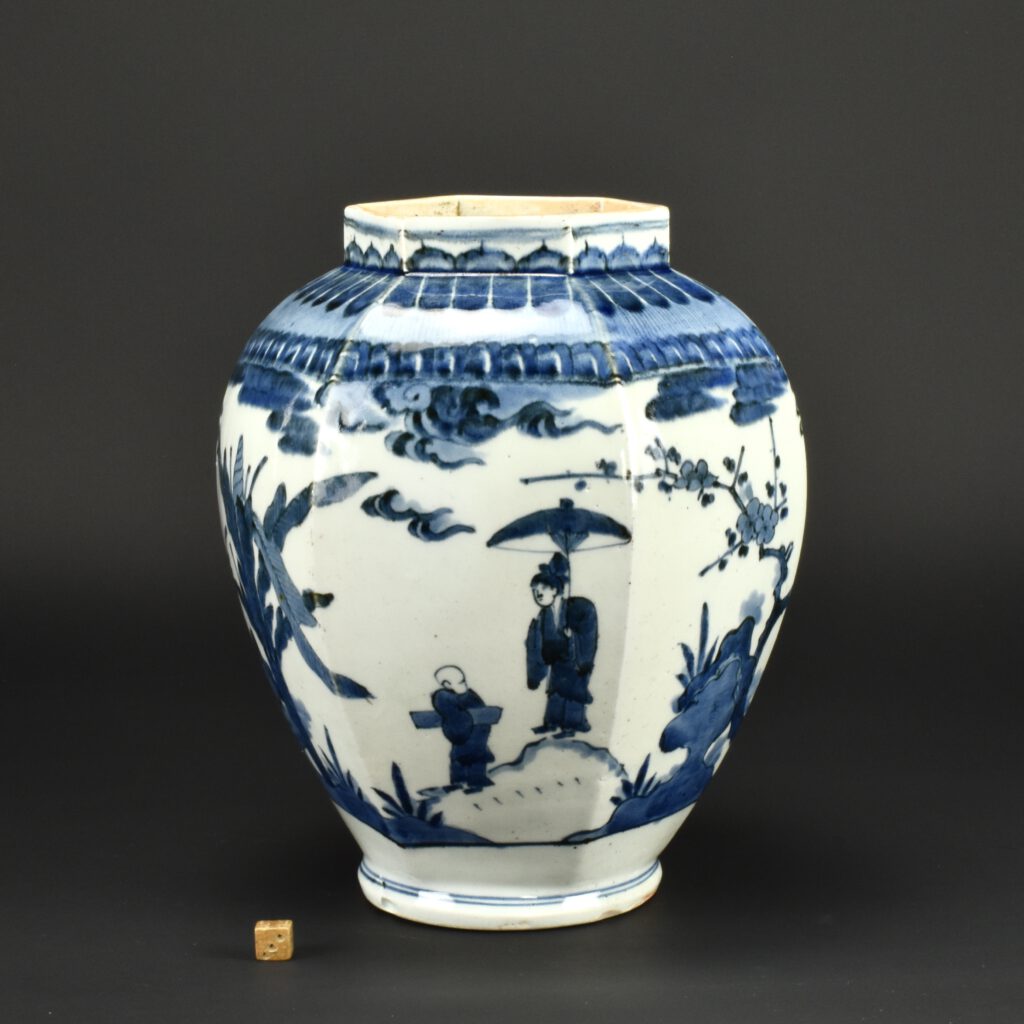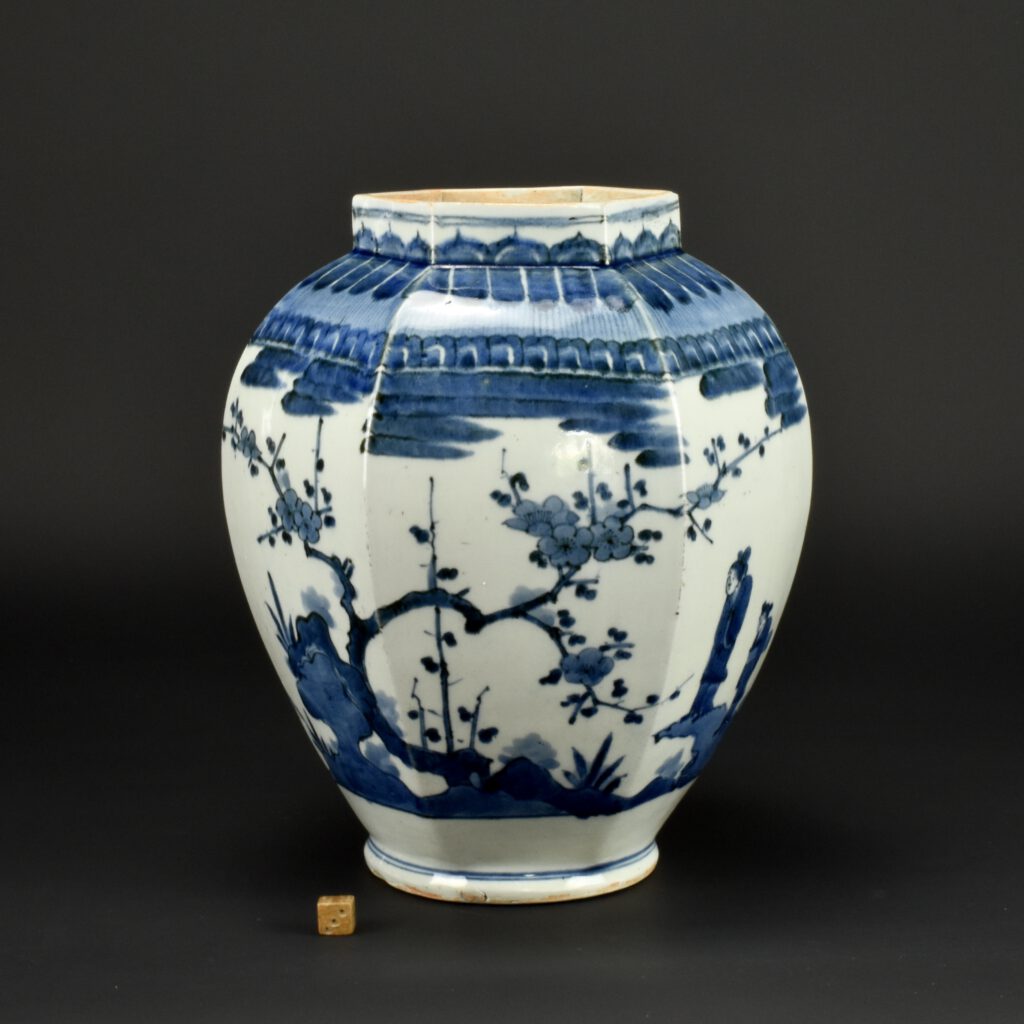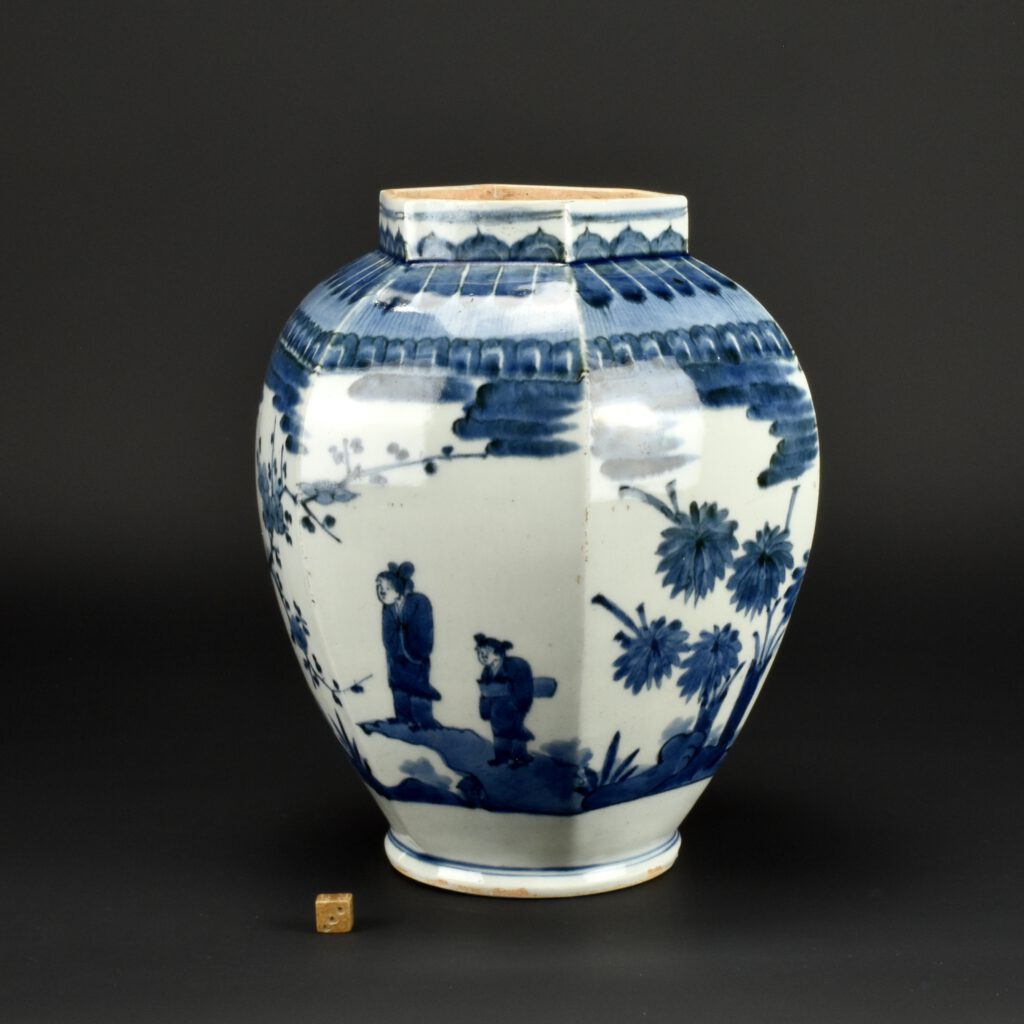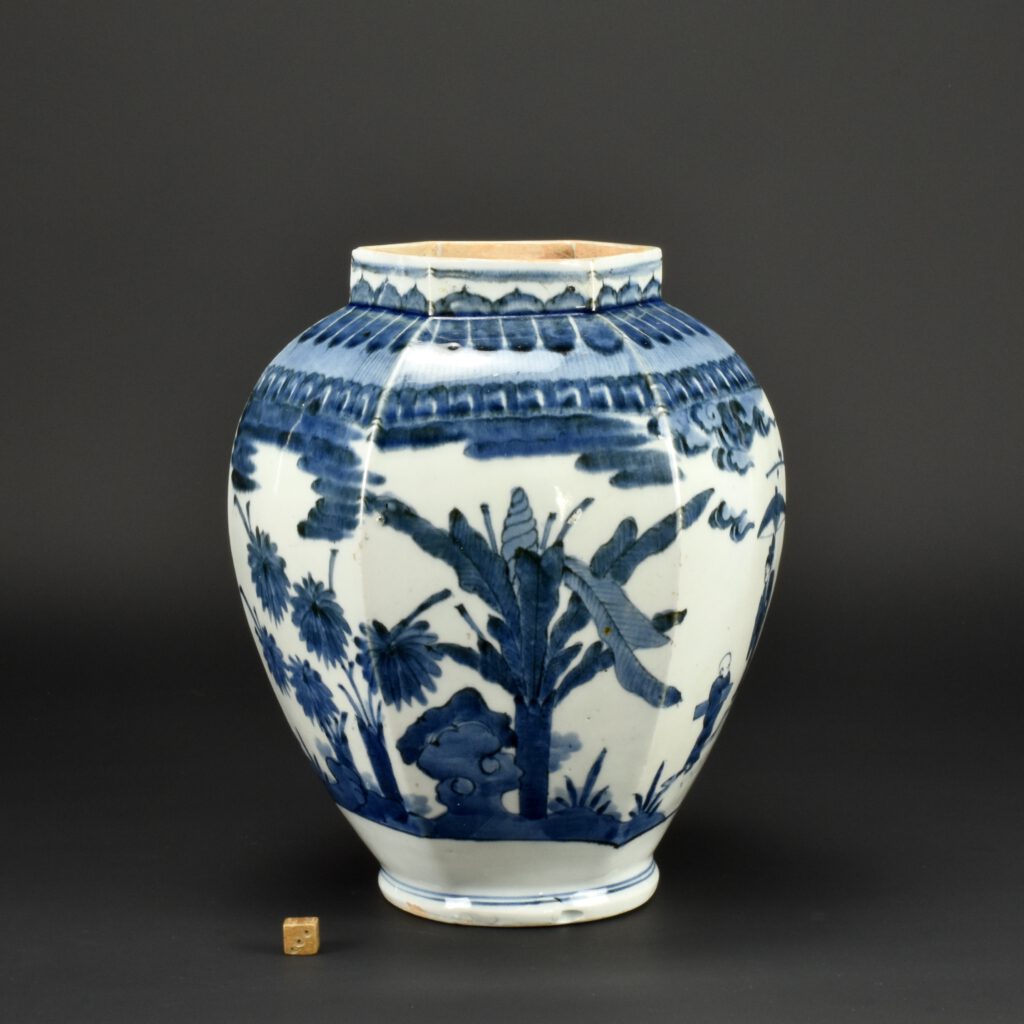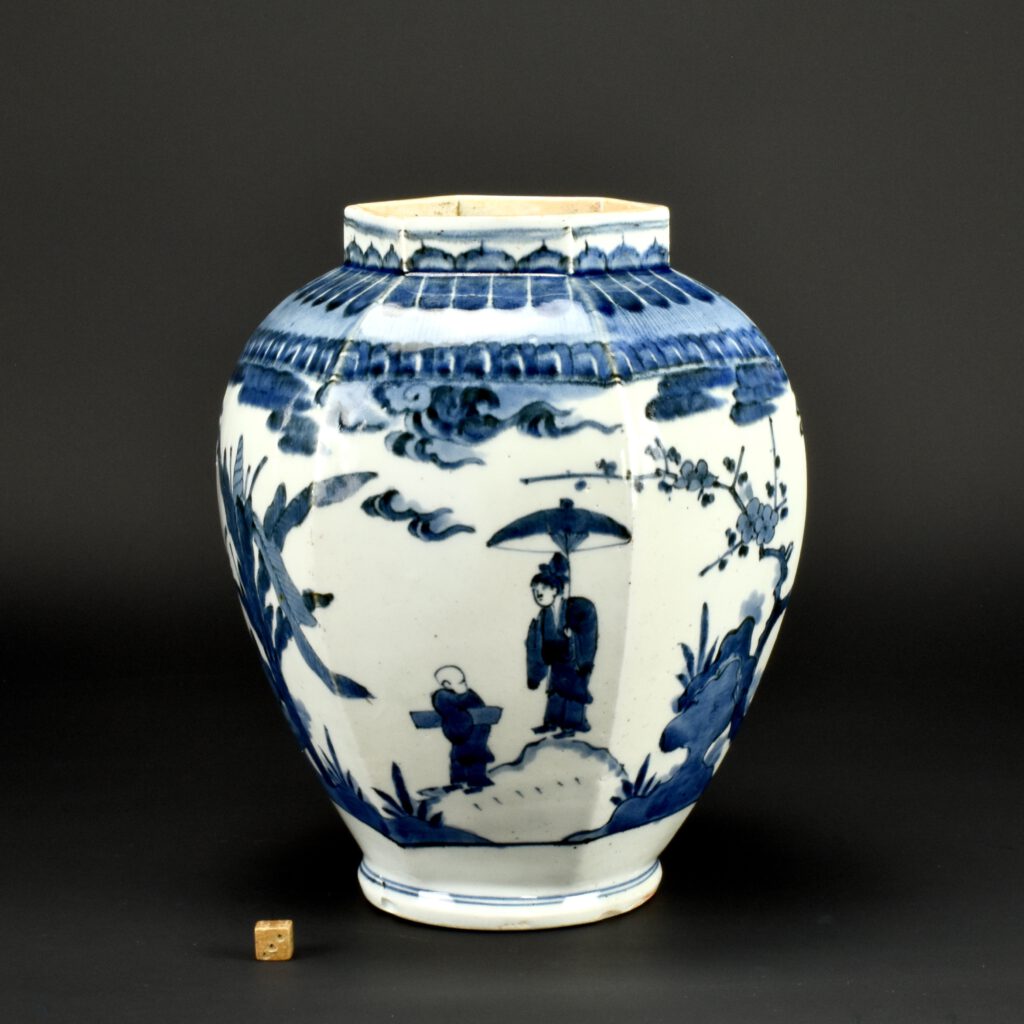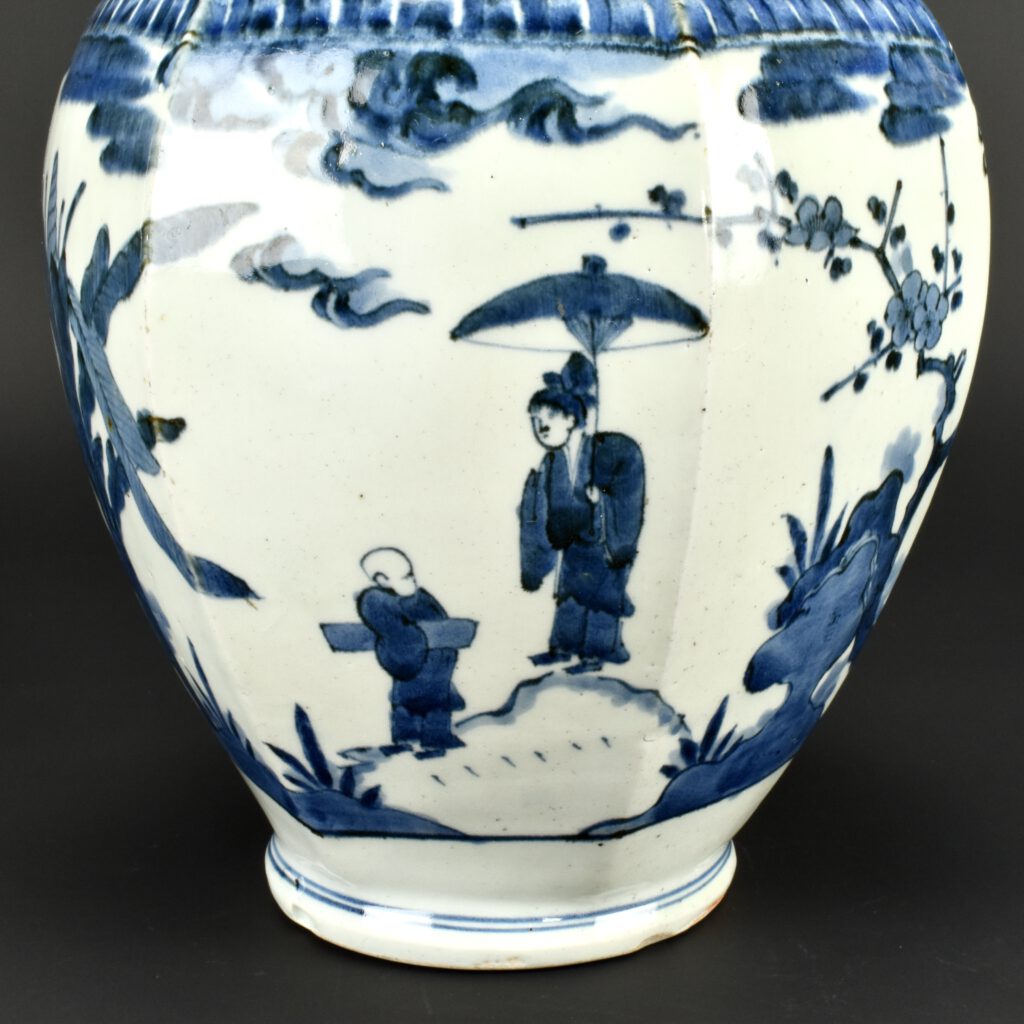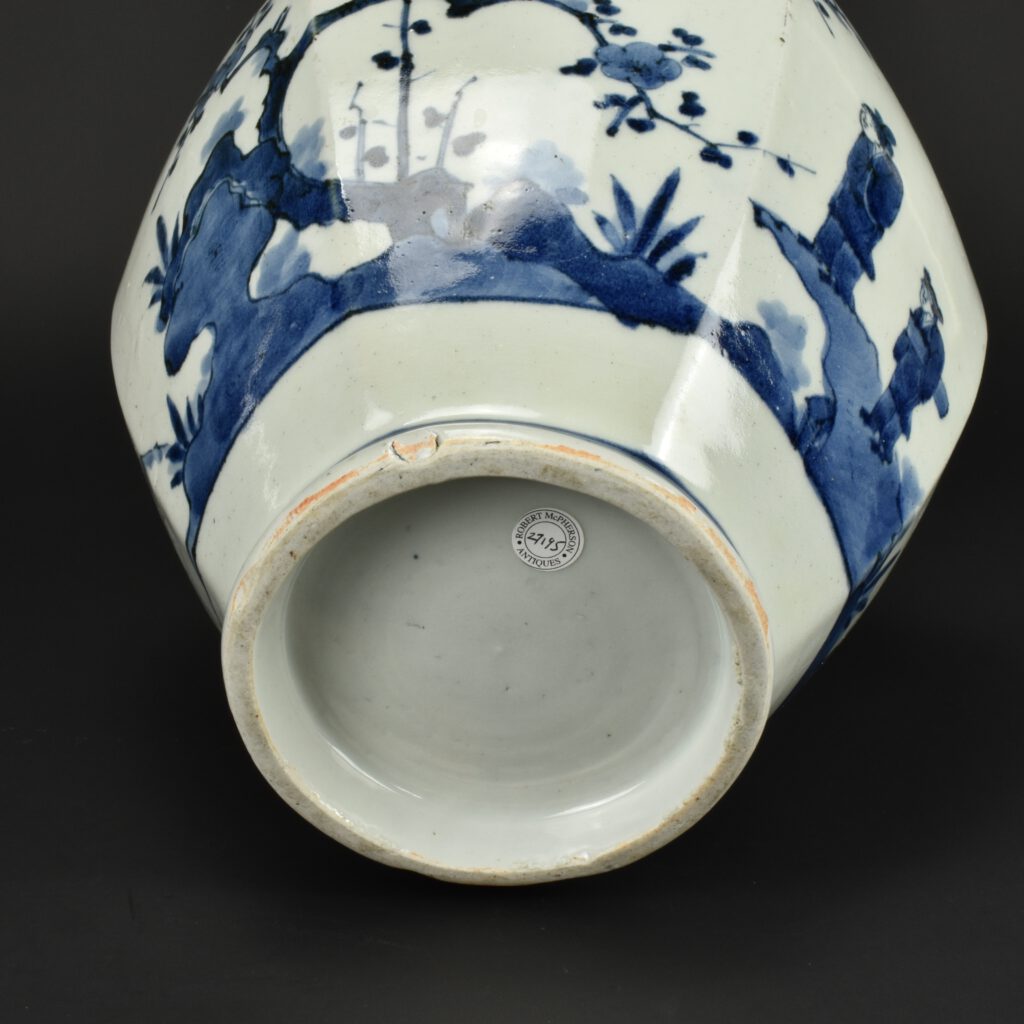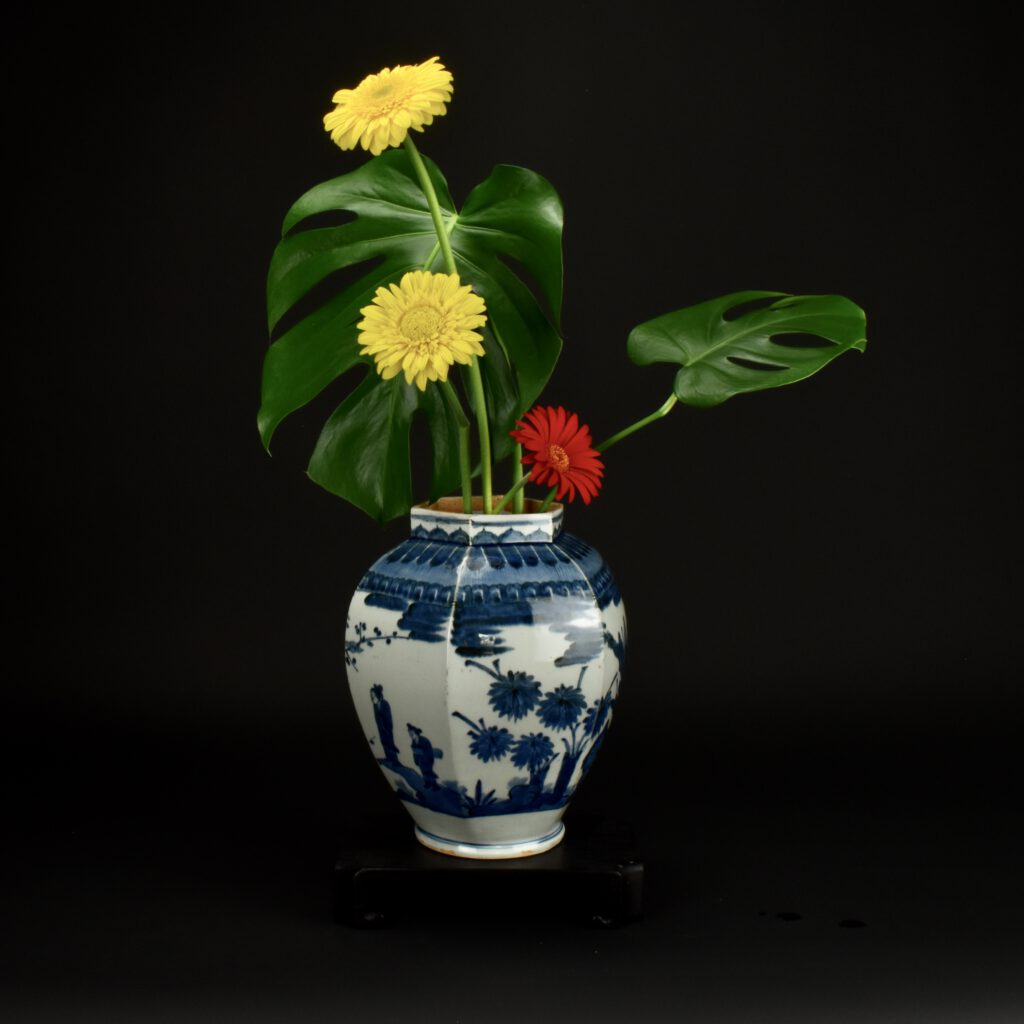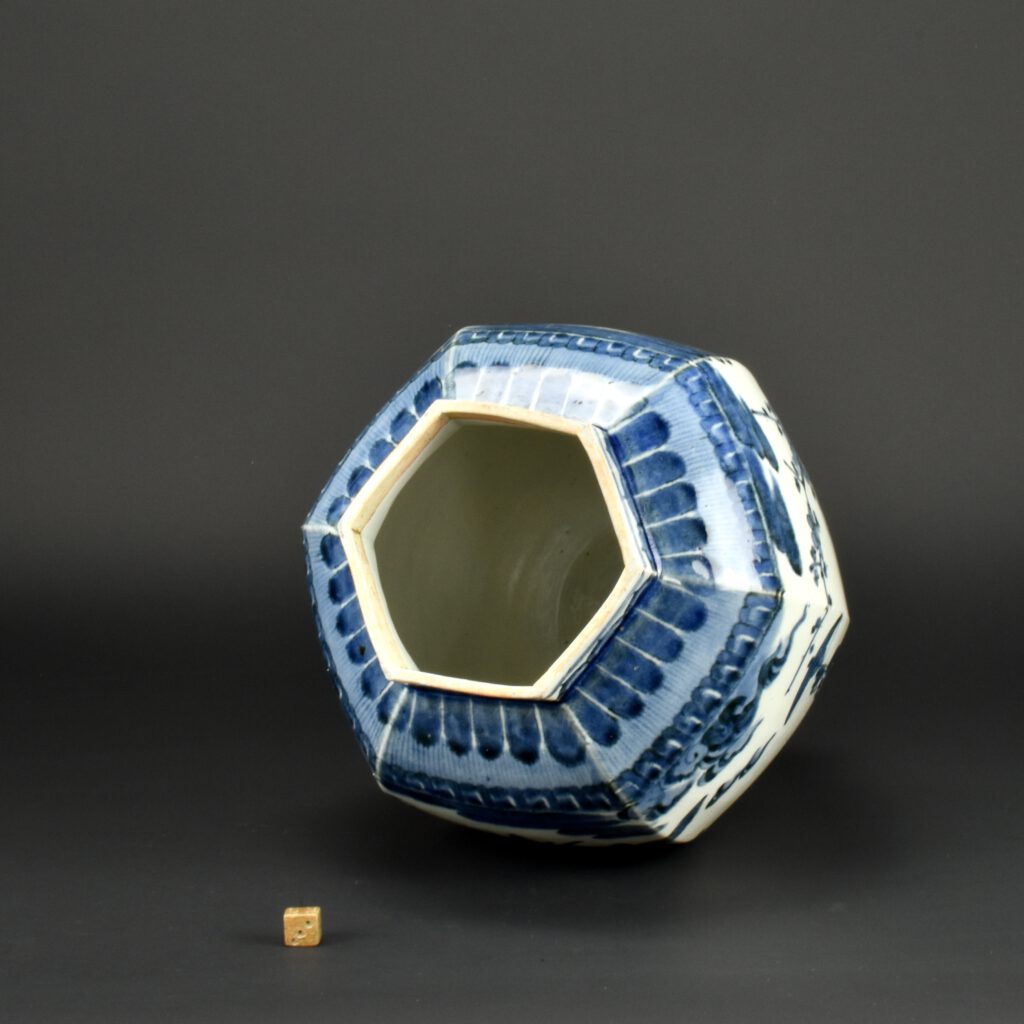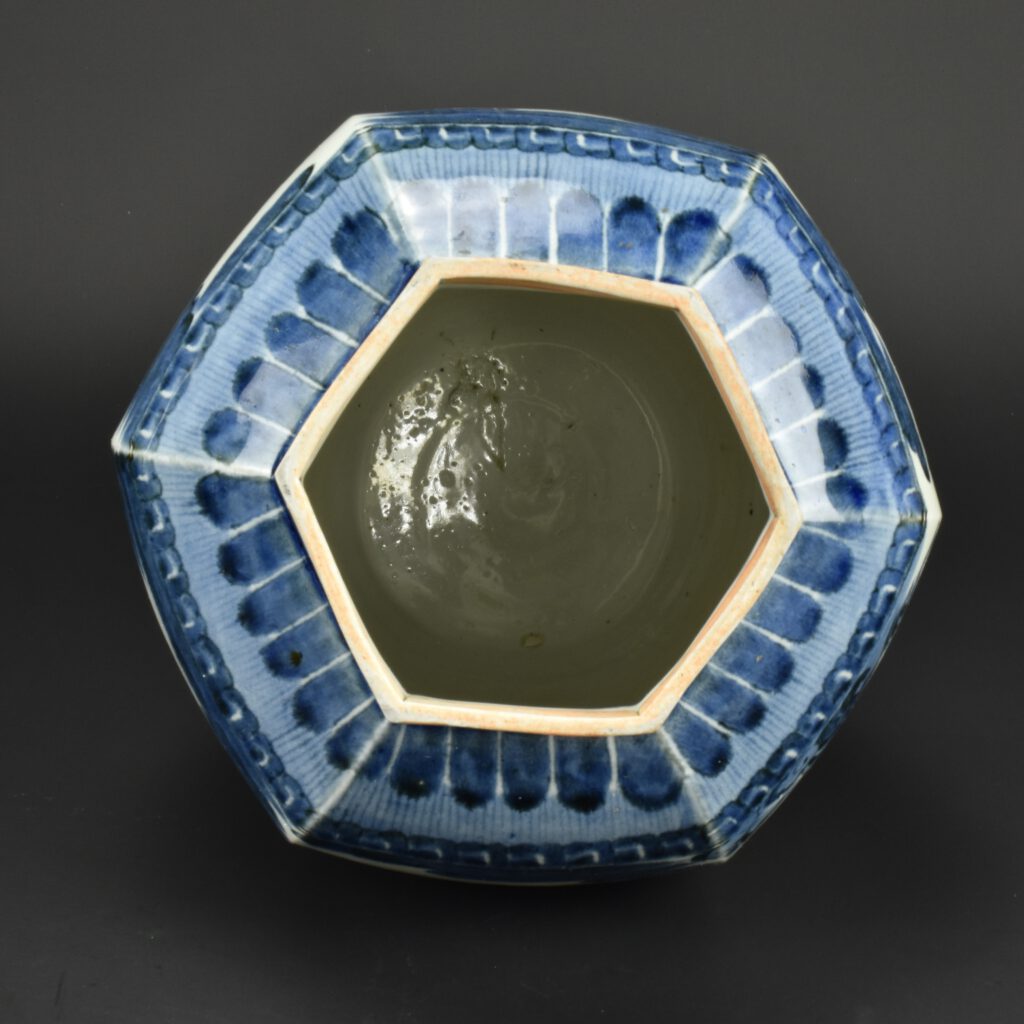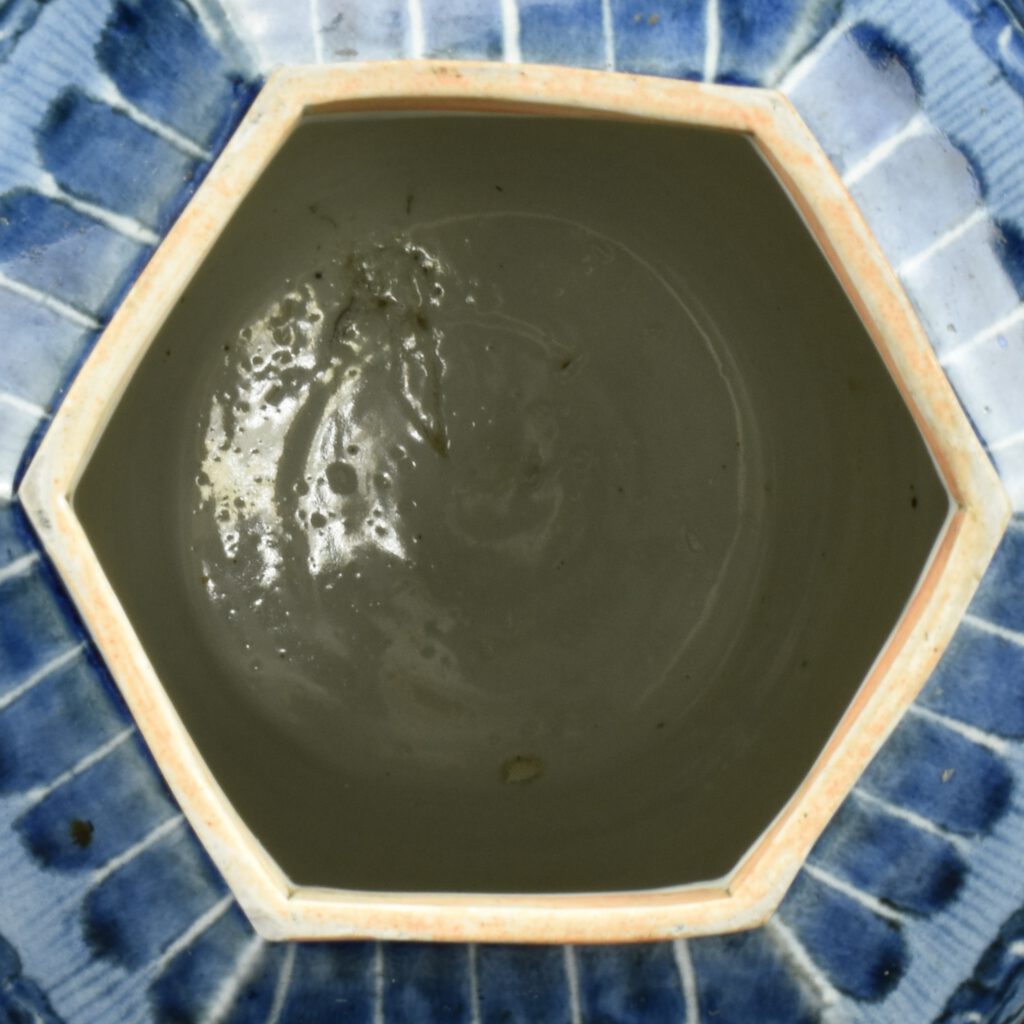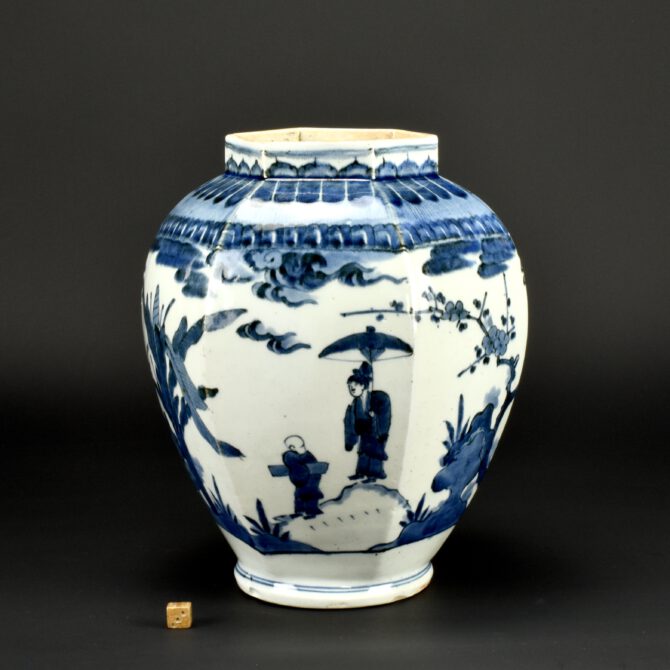
A Japanese Blue and White Hexagonal Porcelain Jar c.1700
A Japanese Blue and White Hexagonal Porcelain Jar, Arita Kilns c.1690-1720. This jar is in the style or at least influenced by porcelain made at the nearby Kakiemon kilns. The drawing of the central figure with parasol hovers over the ground, a bald boy holds what is probably Goto, wrapped in fabric (see below for more information about this seven-string plucked instrument). The scene on the reverse is very similar, but without a parasol. In between are prunus and banana as well as a plant I can’t identify. This heavily potted Japanese export porcelain would have been part of a five-piece garniture, or possibly a pair of jars with covers. Japanese porcelain jars of this type had covers of domed form with a horizontal rim, finished with shaped finial. The unglazed rim, and around a centimetre interior has had the glazed wiped clean was to help the tight connection with the unglazed part of the rim.
See Below For More Photographs and Information.
SOLD
- Condition
- Small chips around the neck.
- Size
- Height 26 cm (10 inches) Diameter of the top 12 cm (4 3/4 inches)
- Provenance
- N/A
- Stock number
- 27195
Information
Chinese Qin, Guqin. Japanese Goto
Guqin is the modern name for a plucked seven-string Chinese musical instrument of the zither family, which used to be referred to as a Qin. It has been played since ancient times, and has traditionally been favoured by scholars and literati as an instrument of great subtlety and refinement, as highlighted by the quote "a gentleman does not part with his qin or se without good reason," as well as being associated with the ancient Chinese philosopher Confucius. It is sometimes referred to by the Chinese as "the father of Chinese music" or "the instrument of the sages".
Traditionally the instrument was called simply qin but by the twentieth century the term had come to be applied to many other musical instruments as well: the yangqin hammered dulcimer, the huqin family of bowed string instruments, and the Western piano are examples of this usage. The prefix "gu-" (meaning "ancient") was later added for clarification. It can also be called qixianqin (lit. "seven-stringed instrument"). The guqin is not to be confused with the guzheng, another Chinese long zither also without frets, but with moveable bridges under each string. Because Robert Hans van Gulik`s famous book about the qin is called The Lore of the Chinese Lute, the guqin is sometimes inaccurately called a lute.
A Pair of Earlier Japanese Blue and White Jars
Robert McPherson Antiques - Sold Archive - 26045
